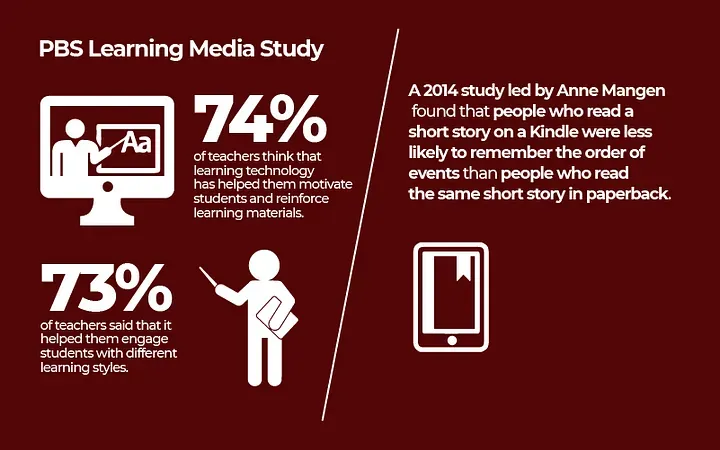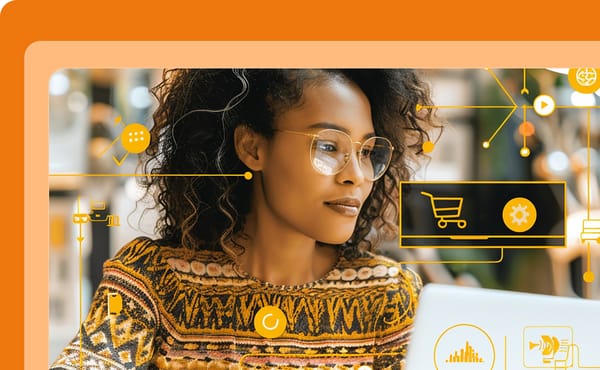How Technology Has Changed How We Learn

Technology has been , and will continue to be the driving force behind how we operate as human beings. This is true for just about every aspect of our lives, and especially with how we receive and process information. It has revolutionized the way we learn and more so, in this ‘post-pandemic’ age, we understand how vital technology is to learning . So how impactful has it been to how we learn , and what effects does learning through technology have on us ? This article explores key phenomena and concepts around the effects of learning through technology, and how this can be further optimized .
The greatest selling point of technology is that it provides convenience . Any developments are supposed to make our lives more efficient . We are constantly bombarded with information, and educational content is more accessible than it has ever been . This means that people have the choice to explore diverse topics that they would have otherwise missed out on . This has also increased our learning time and age . Traditionally , you couldn’t both work full time , have a social life and attend a class but virtual learning has increased our capacity to learn. (Purdue Online, n.d ). The flip side to this is the creation of content filters . This is common amongst Gen Z who have been bombarded with information on the internet all their lives . While this has led to reduced concentration spans, they have developed content filters . Due to a finite resource of time, they have now learned how to sift through large amounts of information and determine what is valuable to us . It is an adaptive method necessitated by this increased access to information. (Murray, 2021).
We are global citizens powered by technology. One of the greatest benefits of technological advancement is improved connectivity. These connections have managed to transcend time zones and cultures to unite people around shared interests . This has increased diversity in learning experiences, and opportunities for growth . (Purdue Online, n.d ). Studies now show that this transactional value in learning also extends to a learner’s socio-emotional process . This means that a shared learning experience, because of the communication required, further unites people. This coupled with individualized experiences creates a community that can produce better , and more adaptive work .(Murray, 2021). This trend of collaboration is then promoted to the workplace and has seen significant success in areas such as medicine . Students are able to watch and learn from streamed real time surgeries and procedures that they would have otherwise not been exposed to .
Do you remember everything you read ? Or better yet , can you clearly remember the plot of the last book you read ? Chances are , you thoroughly enjoyed the book but cannot give an excellent play by play of its contents . The bad news is that you may have to review it several times , but the good news is that you’re completely normal . Murray, (2021) presents the concept of the external brain and how it works in a world of fast information. As aforementioned, we are constantly being bombarded with information and have made adjustments to how we consume information. We created an external brain where if something is available on the internet, we don’t feel the need to remember it comprehensively . If we can look it up , or pull it up , we are less likely to retain all its contents. This is because of limitations on our memory power, and we have to almost clear the cache every so often while we learn, to make room for more information.
We can improve learners’ experiences by optimizing virtual learning . This can be through better functioning sites that have a user friendly interface , and are easily accessible . (Maurice & Day, 2004). Further , we need to remember not to lose the hummannes in virtual learning by inculcating the principles of teacher talk which are; clean introductions , correcting , repetition , explanation, definition , giving examples , offering clarifications, questioning and encouraging learners . While this may be a tall order for developers , we believe it is certainly a necessary one, and especially for foundational learning.(McKenney et al., 2016).
Technology and learning will continue to evolve as we find more solutions to our problems . It is important to understand that the two are dependent on each other, and each must adapt to accommodate the other . If we are to truly gain from technology in learners’ communities , we must adapt , refocus and readjust to respond to the needs of our times . How do you think technology has changed how we learn ?
Written by Grace Kinyua.
REFERENCES
Maurice , S., & Day, R.( 2004). Online Testing Technology: Important Lessons Learned. Int. J. Engng Ed. Vol. 20, №2, pp. 152±160. Great Britain: TEMPUS Publications.
McKenney, S., Boschman, F., Pieters, J. et al.(2016). Collaborative Design of Technology-Enhanced Learning: What can We Learn from Teacher Talk?. TechTrends 60, 385–391. https://doi.org/10.1007/s11528-016-0078-8
Murray, D. (2021).How Technology has changed the way we learn. Go1. https://www.go1.com/en-gb/blog/post-how-technology-has-changed-the-way-we-learn
Purdue Online. How has technology changed education? Purdue University. https://online.purdue.edu/blog/education/how-has-technology-changed-education#:~:text=Students%20can%20collaborate%20on%20group,roles%20of%20teachers%20and%20learners.





